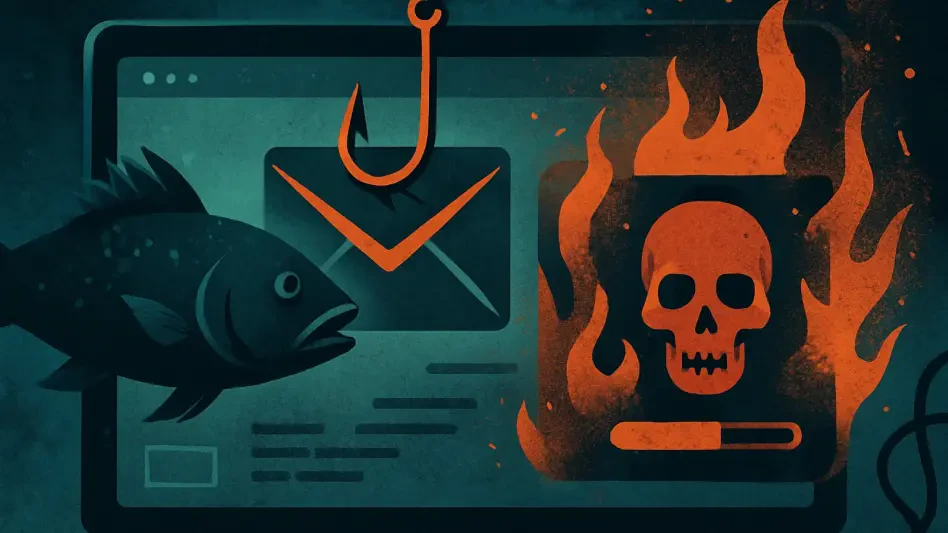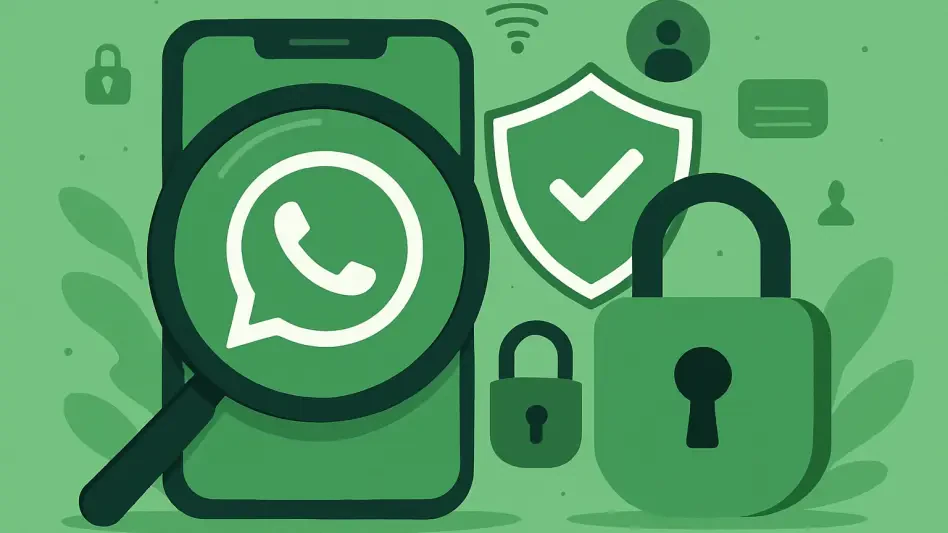What happens when a seemingly urgent email from a trusted authority lands in your inbox, demanding immediate action? In a chilling wave of cyberattacks sweeping across the globe, cybercriminals are impersonating the National Police of Ukraine, tricking unsuspecting Windows users into downloading destructive malware. These fake legal notices, cloaked in official urgency, are not just a nuisance—they are a gateway to devastating data theft and system hijacking. This sophisticated phishing campaign reveals a dark side of digital trust, where even the most cautious can fall prey to cleverly disguised threats.
The significance of this cyber threat cannot be overstated. With phishing attacks becoming more refined, this campaign stands out as a stark warning of how trust in institutions can be weaponized. The dual malware payloads, Amatera Stealer and PureMiner, target personal data and computing resources, posing severe risks to individuals and organizations alike. As cybercriminals exploit both psychological vulnerabilities and technical loopholes, understanding this attack is crucial for anyone navigating the digital landscape in 2025 and beyond.
Why Cybercriminals Impersonate Ukraine’s National Police
The audacity of this phishing campaign lies in its exploitation of authority. By posing as the National Police of Ukraine, attackers craft emails that mimic official correspondence, complete with legal jargon and urgent warnings of “further action” if ignored. This tactic preys on the inherent trust people place in law enforcement, making recipients more likely to open attachments without a second thought.
The choice of a national police force as the disguise is no accident. Such entities carry a weight of legitimacy that can override skepticism, especially in regions where respect for authority is deeply ingrained. Windows users worldwide, unfamiliar with the specifics of Ukrainian law enforcement communications, are particularly vulnerable to this ruse, believing they must comply with what appears to be a critical legal matter.
This deception is amplified by the global context of heightened sensitivity toward international issues. Cybercriminals bank on the emotional pull of a country often in the news, using its name to lend credibility to their scam. The result is a potent mix of fear and obligation that drives victims to act quickly, often bypassing their usual caution when handling unsolicited emails.
The Rising Threat of Phishing in a Trust-Dependent Digital Age
Phishing attacks have evolved far beyond simple password grabs, morphing into complex schemes that exploit human psychology as much as technology. This campaign targeting Windows users exemplifies how cybercriminals manipulate trust in official bodies to deliver malware with catastrophic potential. The stakes are higher than ever, as these attacks threaten not just financial loss but also personal privacy and system integrity.
The broader trend of social engineering paired with technical exploits signals a dangerous shift in cybercrime. According to recent studies, phishing attacks have surged by over 60% since 2025, with many leveraging trusted names to bypass suspicion. This growing sophistication means that even tech-savvy individuals can be caught off guard by emails that appear legitimate at first glance.
The impact extends beyond individual victims to entire organizations, where a single compromised device can serve as an entry point for wider network breaches. As reliance on digital communication continues to grow, the challenge of distinguishing genuine messages from malicious ones becomes a pressing concern. This campaign underscores the urgent need for heightened awareness in a world where trust is both a strength and a vulnerability.
Breaking Down the Attack: How Amatera Stealer and PureMiner Operate
At the heart of this phishing scheme is a meticulously crafted attack chain that begins with a deceptive email. The message contains a Scalable Vector Graphics (SVG) file, a seemingly harmless image format that hides malicious code within its structure. When opened, it triggers a fake loading screen, lulling victims into a false sense of normalcy while a password-protected ZIP archive is downloaded to their system.
Inside the archive—often named something innocuous like ergosystem.zip—lies a Compiled HTML Help (CHM) file that unleashes a script called CountLoader. This script connects to a remote server, gathers system data, and deploys the malware payloads directly into memory, evading traditional antivirus detection through its fileless nature. The dual threat then emerges: Amatera Stealer, which harvests sensitive information from browsers, messaging apps, and crypto wallets, and PureMiner, which hijacks CPU and GPU resources for cryptocurrency mining.
The real-world consequences are dire. Amatera Stealer can extract login credentials from platforms like Chrome and Telegram, while also targeting BitcoinCore wallet files up to five folder levels deep. Meanwhile, PureMiner silently drains system performance, turning infected devices into unwitting tools for the attackers’ financial gain. This multi-layered approach maximizes damage, leaving victims grappling with both immediate data loss and long-term resource theft.
Expert Warnings on the Escalating Cyber Risk
Cybersecurity researchers have sounded the alarm on the severity of this campaign, labeling it a high-risk threat due to its potential for remote control and extensive damage. The blend of psychological manipulation—using the guise of a police force—and advanced delivery methods like fileless malware makes this attack particularly insidious. Experts note that such tactics are becoming increasingly difficult to detect with standard security tools.
One researcher emphasized, “The use of SVG files and fileless techniques shows a level of sophistication that challenges even robust defenses. Victims may not realize their systems are compromised until significant harm is done.” This insight highlights the stealthy nature of the attack, where traditional warning signs are absent, and the malware operates under the radar.
The consensus among analysts is that campaigns like this represent a new frontier in cyber threats, combining human and technical vulnerabilities. With the potential for stolen data to be sold on the dark web or used for further attacks, the ripple effects can be felt long after the initial infection. This expert perspective reinforces the urgency of addressing such threats with both technological solutions and user education.
Safeguarding Against Deceptive Phishing Scams
Protecting against scams like these fake police emails requires a proactive approach rooted in vigilance. Start by scrutinizing every unsolicited email for red flags, such as unusual sender addresses or urgent demands that pressure immediate action. Even if the message appears official, resist the urge to open attachments or click links without verification.
Another critical step is to confirm the legitimacy of urgent requests through trusted, official channels. If an email claims to be from a law enforcement agency, contact the organization directly using contact information from their verified website, not the details provided in the message. This simple habit can prevent falling into traps designed to exploit trust and urgency.
Equipping oneself with security tools and knowledge is equally vital. Regular updates to antivirus software, combined with training on recognizing phishing attempts, can create a strong line of defense. By fostering a mindset of skepticism toward unexpected communications, individuals can stay ahead of cybercriminals who rely on haste and deception to succeed.
Reflecting on a Persistent Cyber Menace
Looking back, the phishing campaign that leveraged fake Ukraine police notices served as a sobering reminder of how far cybercriminals will go to exploit trust. The devastating capabilities of Amatera Stealer and PureMiner underscored the dual dangers of data theft and resource hijacking, leaving countless Windows users vulnerable to unseen attacks. It was a stark lesson in the power of deception paired with technical prowess.
Moving forward, the emphasis shifted to actionable prevention. Strengthening personal and organizational defenses through awareness, verification protocols, and advanced security measures became paramount. The fight against such threats demanded a collective commitment to outsmart attackers by staying informed and cautious. As cybercrime continued to evolve, so too did the resolve to build a safer digital environment for all.








